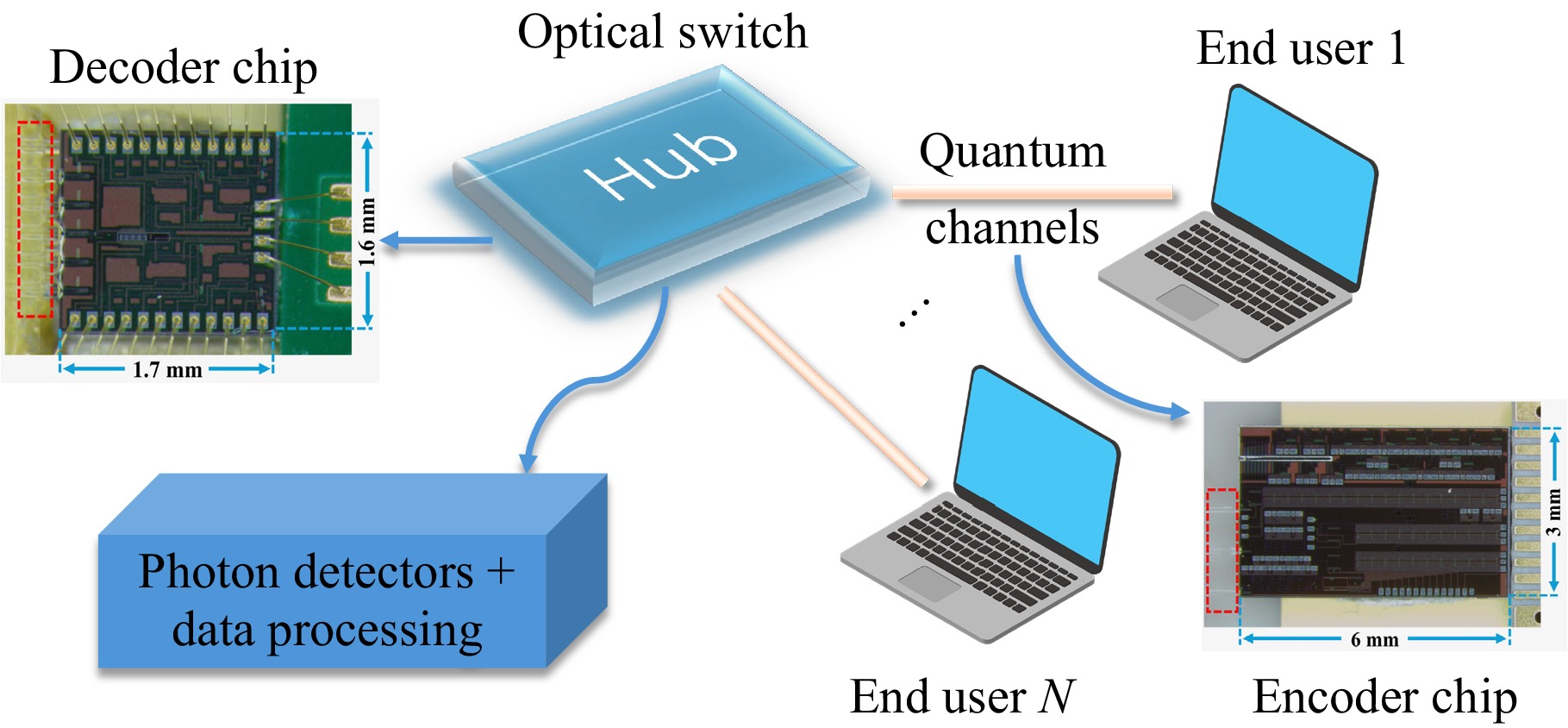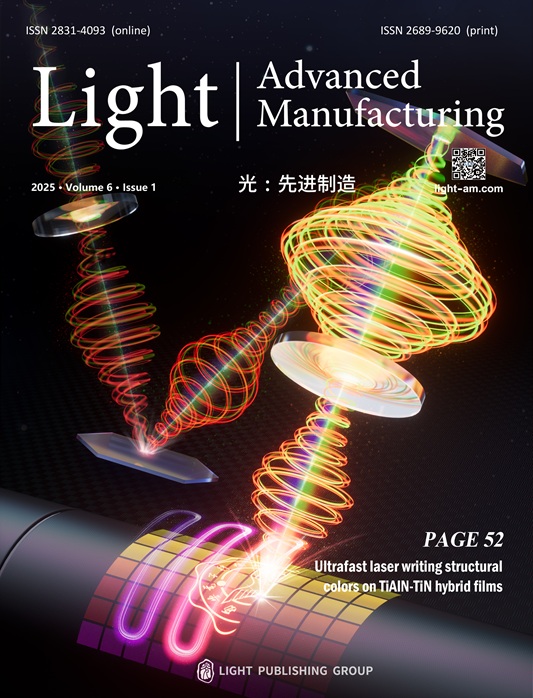-
There has been immense interest in quantum cryptography due to its ability to achieve information-theoretically secure encryption1,2. One prominent application is quantum key distribution (QKD), which has already been demonstrated over long distances and integrated into backbone fiber infrastructure3,4. Meanwhile, quantum digital signatures (QDS) promise unbreakable security for verifying data authenticity and integrity, potentially serving as a cornerstone for financial transactions, legal agreements, and blockchain5. However, current QDS systems often rely on bulky, expensive optical components, hindering large-scale deployment. Now, writing in Light: Science & Applications, the team led by Kejin Wei, Xi Xiao and Hua-Lei Yin reported a chip-integrated QDS network that operates over 200 km—another leap toward practical quantum networks6.
Traditional QDS systems have long depended on bulky, high-precision optical setups, limiting their practicality. Most require users to perform photon detection—a task that demands sensitive single-photon detectors (SPDs), which are difficult to integrate into compact systems. Scaling such systems for multi-user networks or long-distance transmission is also hampered by photon loss and resource bottlenecks. By integrating quantum state encoding and decoding onto photonic chips, the team’s new approach greatly reduces both size and cost while maintaining robust security.
A key innovation lies in relocating expensive and complex measurement hardware—such as SPDs and decoding units—to a central relay, allowing users to employ low-cost, chip-based transmitters (Fig. 1). By using a star-topology network and the team’s “1-decoy-state BB84 OTUH-QDS” protocol, they eliminate the need for vacuum-state preparation, reducing hardware complexity and enabling the signing of arbitrarily large messages (e.g., 1 Mbit) with a security parameter of 4.72 × 10−8. Through on-chip optimization of intensity modulation and polarization encoding, the system achieved a signature rate of 0.0414 tps over 200 km—outperforming previous fiber-based QDS demonstrations by more than fourfold in distance and efficiency.

Fig. 1 Schematic of the star-like topology chip-based QDS network. The network consists of a central hub containing optical switches, decoder chips, and measurement units. End users possess the encoder chips, where quantum states are generated and then transmitted to the central hub via established quantum channels. Figure adapted from ref.6 under a Creative Commons license CC BY 4.0 (http://creativecommons.org/licenses/by/4.0/).
Central to this breakthrough is the encoder-decoder chipset, fabricated using commercial foundry processes. The encoder chip integrates intensity modulators and polarization modulators on a 6 × 3 mm2 silicon platform, while the packaged decoder chip realizes polarization tracking using a chip-inboard assembly with a size of 3.95 × 2.19 × 0.90 cm3. Paired with 70%-efficient superconducting nanowire detectors, the system minimizes latency and photon loss, even at ultralow signal levels. This architecture avoids the need for on-chip SPD integration—a longstanding technical hurdle.
The team’s QDS advance also aligns with broader trends in photonic integration within quantum science. Recent progress in quantum nanophotonic chips—such as low-loss waveguide arrays and hybrid laser integration—is mitigating key bottlenecks in quantum repeaters and entanglement distribution7–9. These chips, often leveraging the same fabrication techniques as the QDS encoder/decoder, hold promise for unifying QKD, QDS, and quantum sensing on a single platform. In addition, photonic chips have demonstrated remarkable versatility in quantum simulations and may also play a pivotal role in future quantum computers10,11.
The integration of photonic processors with quantum communication networks points to a future in which quantum technologies seamlessly enhance both security and computational capabilities. The chip-integrated quantum signature network represents a major milestone in scalable quantum communication, offering a viable pathway for global cryptographic protocol deployment. Despite this progress, challenges remain. Increasing photon-counting rates, mitigating thermal crosstalk in densely integrated chips, and standardizing protocols across platforms are ongoing hurdles8. Yet, as quantum photonic chips achieve ever-higher fidelities in multi-mode operations and push the limits of fiber-based quantum communication, the vision of a global quantum internet becomes increasingly tangible. As these technologies mature, they may soon evolve from laboratory novelties into backbone infrastructure, ensuring a quantum future that is not only secure but seamlessly integrated into the fabric of digital society.
Chip-based quantum signature network reaches 200 km
- Light: Advanced Manufacturing , Article number: (2025)
- Received: 18 February 2025
- Revised: 30 April 2025
- Accepted: 08 May 2025 Published online: 25 June 2025
doi: https://doi.org/10.37188/lam.2025.041
Abstract: A pioneering chip-based quantum digital signature (QDS) network achieves secure document signing over 200 km of fiber, leveraging integrated photonics to miniaturize transmitters and centralize measurement systems. This breakthrough paves the way for future scalable, cost-effective, and robust quantum-secure communication networks.
Rights and permissions
Open Access This article is licensed under a Creative Commons Attribution 4.0 International License, which permits use, sharing, adaptation, distribution and reproduction in any medium or format, as long as you give appropriate credit to the original author(s) and the source, provide a link to the Creative Commons license, and indicate if changes were made. The images or other third party material in this article are included in the article′s Creative Commons license, unless indicated otherwise in a credit line to the material. If material is not included in the article′s Creative Commons license and your intended use is not permitted by statutory regulation or exceeds the permitted use, you will need to obtain permission directly from the copyright holder. To view a copy of this license, visit http://creativecommons.org/licenses/by/4.0/.






 DownLoad:
DownLoad: